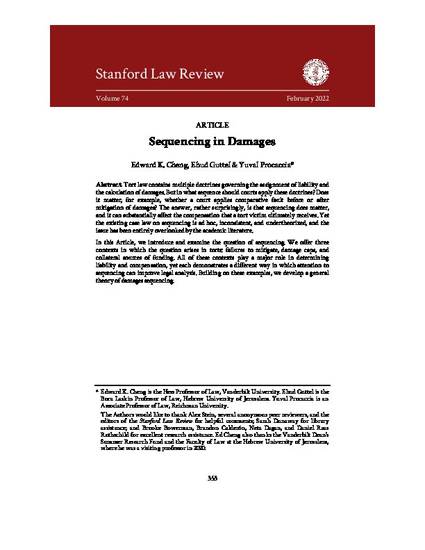
- tort law,
- sequencing of applied doctrine,
- liability and compensation
- Law,
- Legal Remedies and
- Torts
Tort law contains multiple doctrines governing the assignment of liability and the calculation of damages. But in what sequence should courts apply these doctrines? Does it matter, for example, whether a court applies comparative fault before or after mitigation of damages? The answer, rather surprisingly, is that sequencing does matter, and it can substantially affect the compensation that a tort victim ultimately receives. Yet the existing case law on sequencing is ad hoc, inconsistent, and undertheorized, and the issue has been entirely overlooked by the academic literature. In this Article, we introduce and examine the question of sequencing. We offer three contexts in which the question arises in torts: failures to mitigate, damage caps, and collateral sources of funding. All of these contexts play a major role in determining liability and compensation, yet each demonstrates a different way in which attention to sequencing can improve legal analysis. Building on these examples, we develop a general theory of damages sequencing.
Available at: http://works.bepress.com/edward-cheng/26/
